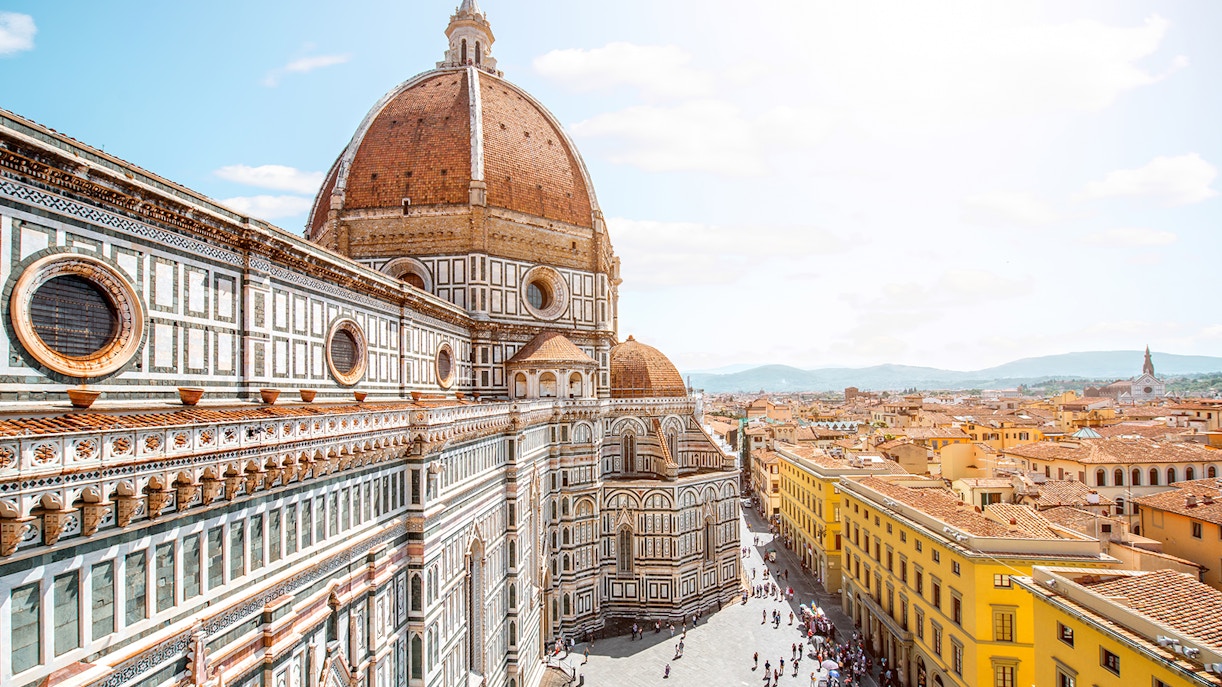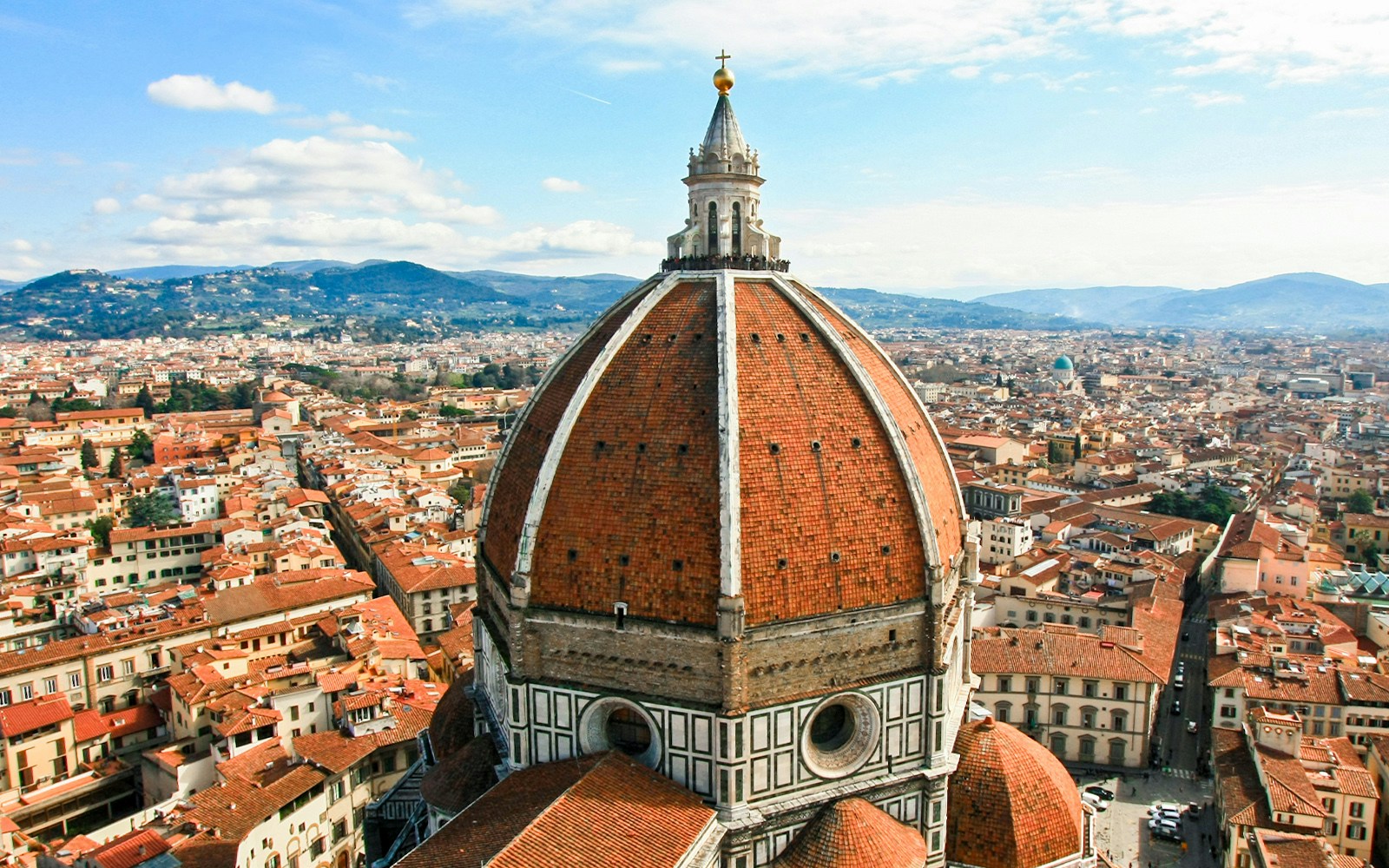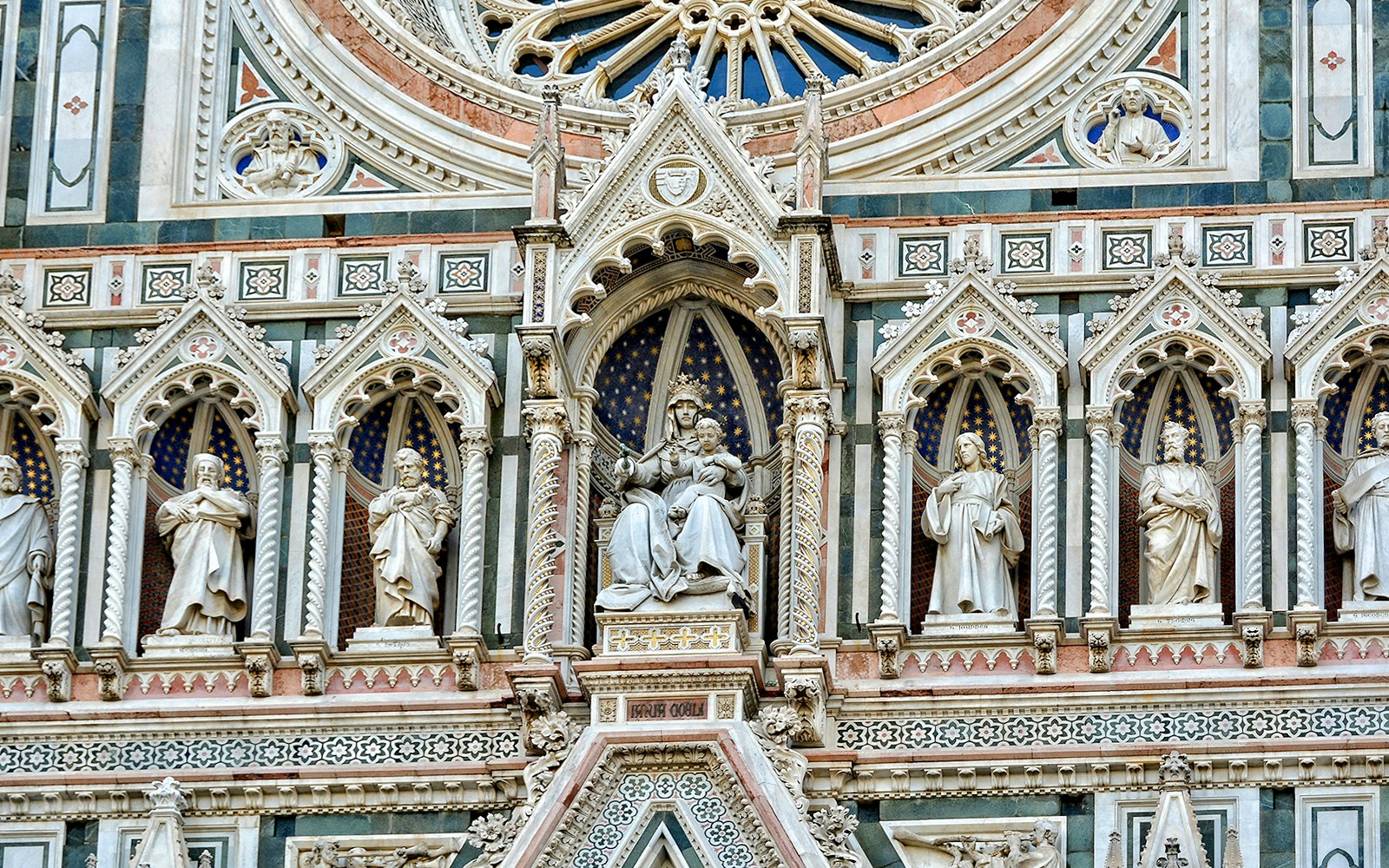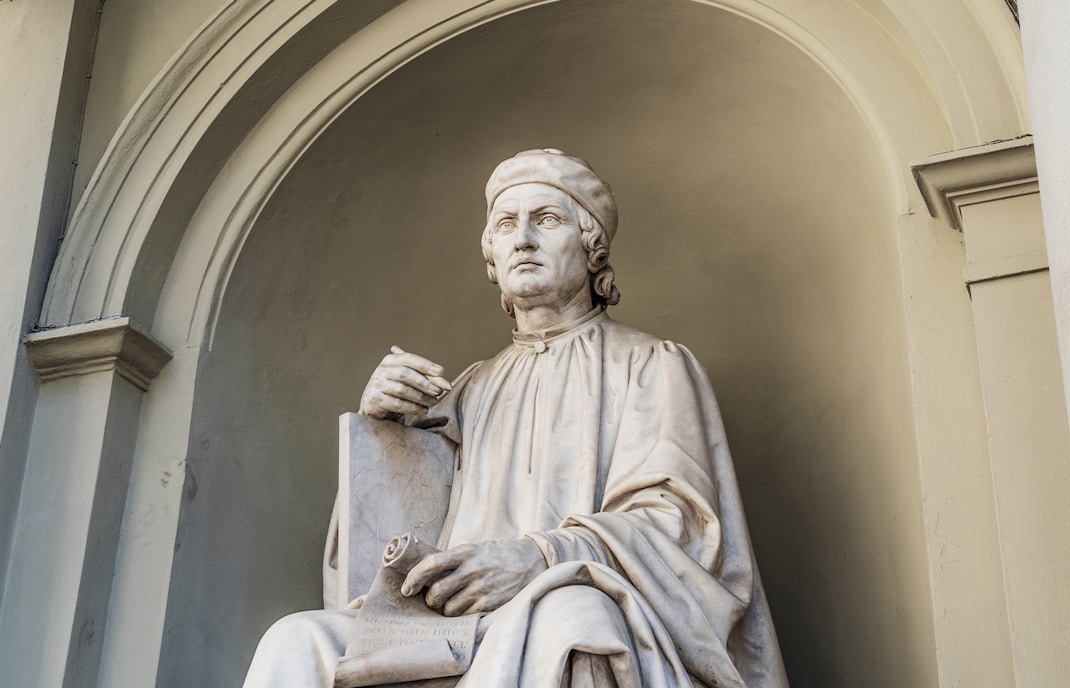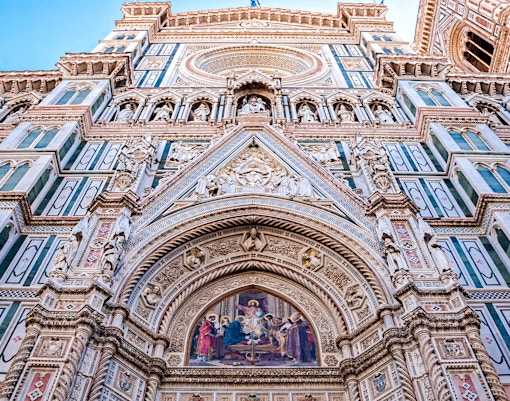Stages of construction of Duomo Florence
*Early 14th Century:* The ambitious project to build the Cathedral of Santa Maria del Fiore began in 1296, with the initial designs by Arnolfo di Cambio. However, progress was slow, and the structure faced several interruptions.
*1401 - Brunelleschi's Ingenious Design:* Facing the challenge of constructing a massive dome without a temporary wooden support structure, a competition was held in 1401. Filippo Brunelleschi's innovative double-shell dome design won, marking a pivotal moment in Renaissance architecture.
*1402 - Beginning of Brunelleschi's Work:* Brunelleschi started working on the dome in 1420, utilizing groundbreaking techniques. He employed a herringbone brick-laying pattern, embedded iron chains for reinforcement, and created a self-supporting structure with inner and outer shells.
*1436 - Completion of the Dome:* Brunelleschi's ingenious engineering led to the completion of the dome in 1436. The structure, known for its immense size and architectural brilliance, became a symbol of Renaissance achievement.
*19th Century Additions:* In the 19th century, Emilio De Fabris added a Gothic Revival facade to the western side, enhancing the cathedral's external aesthetics.
Detailed history of Duomo Florence

